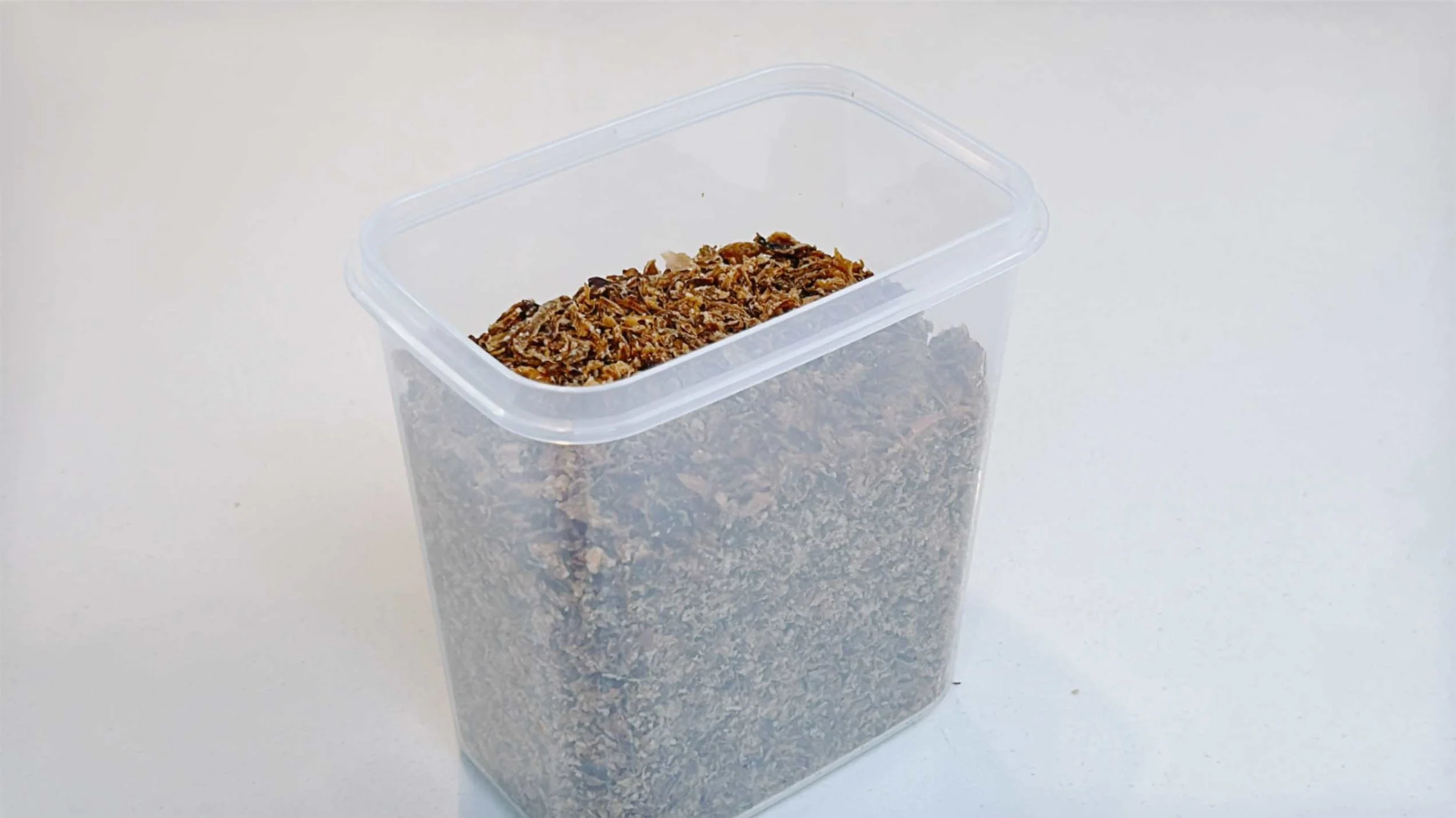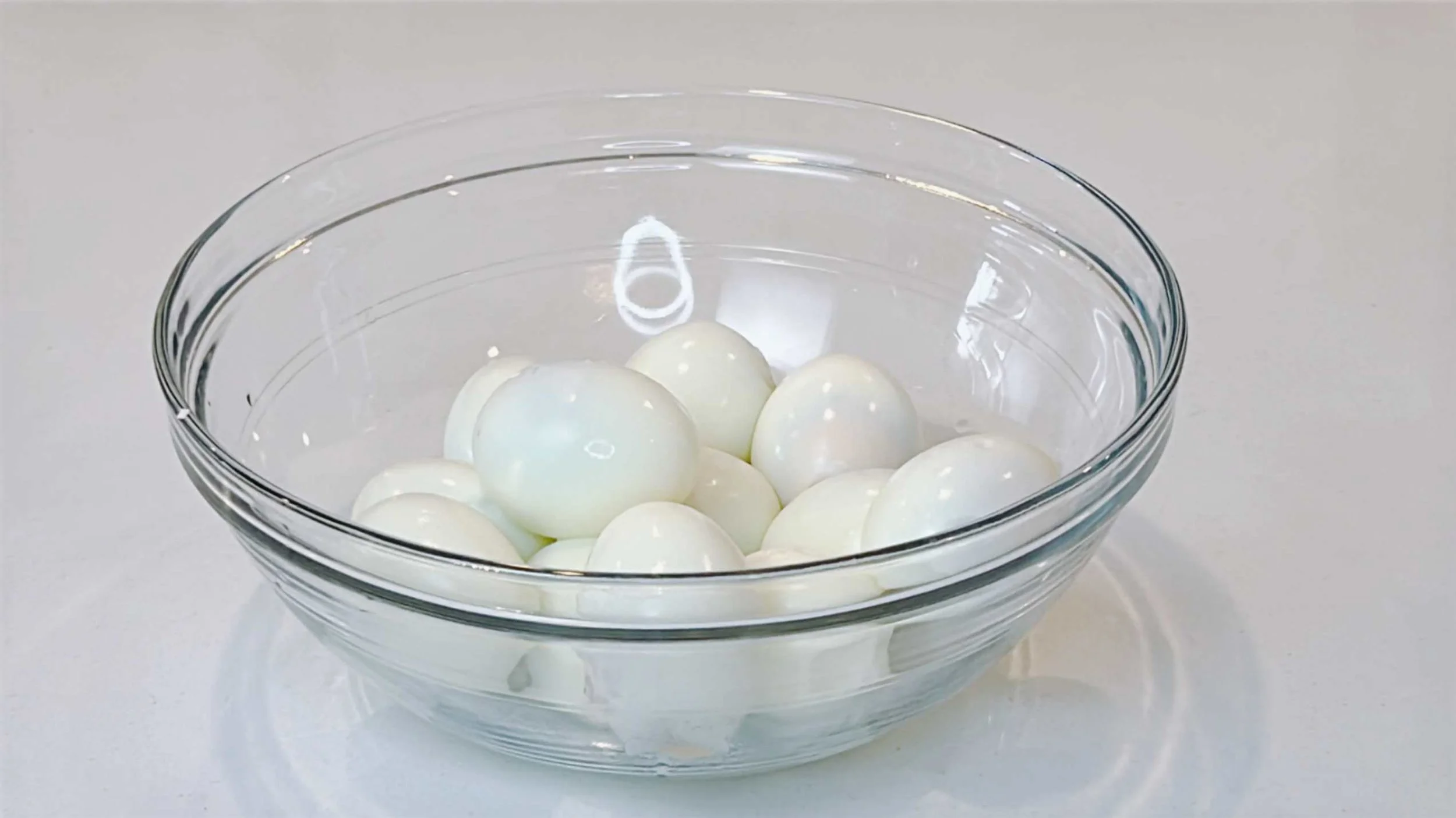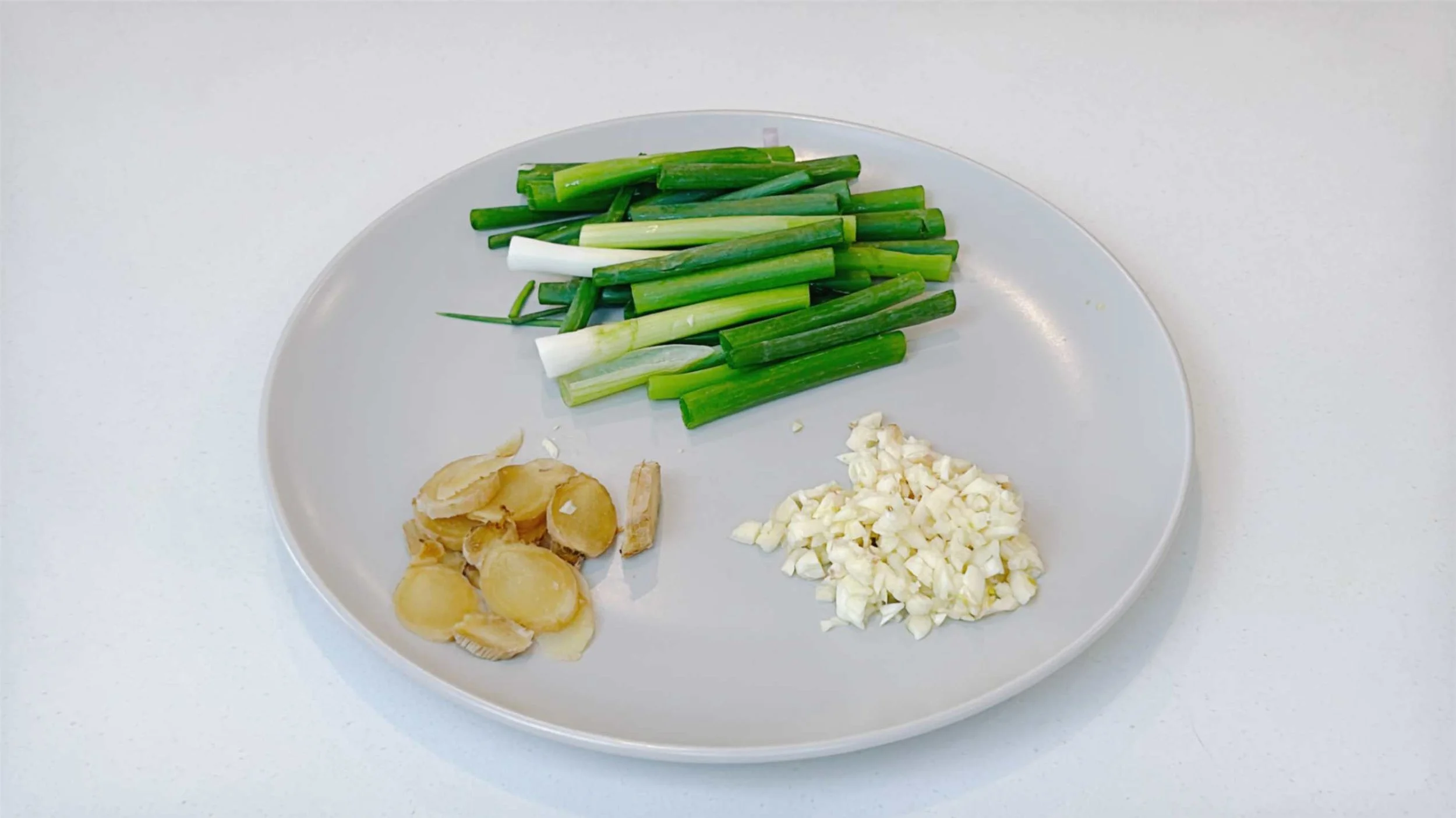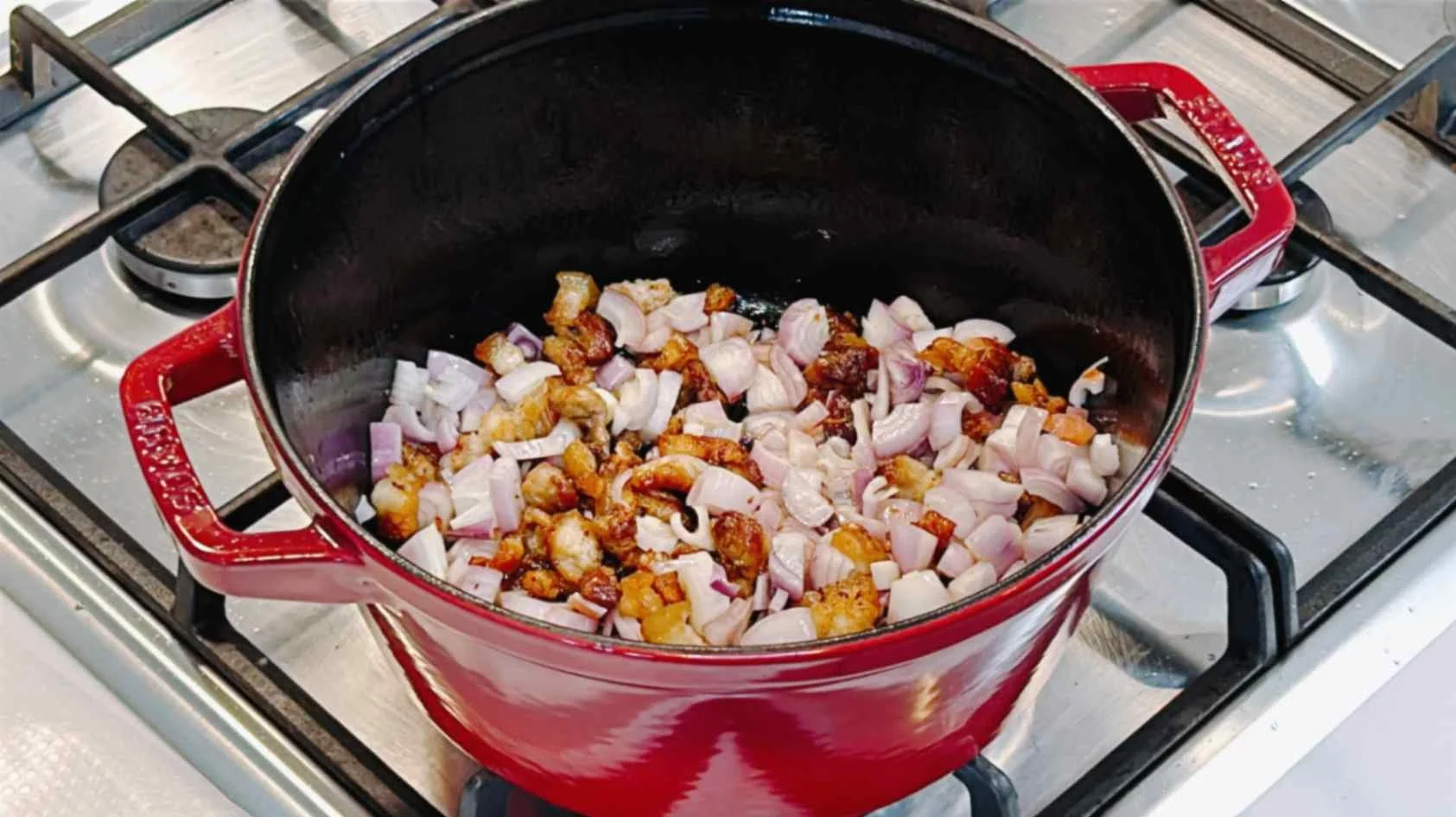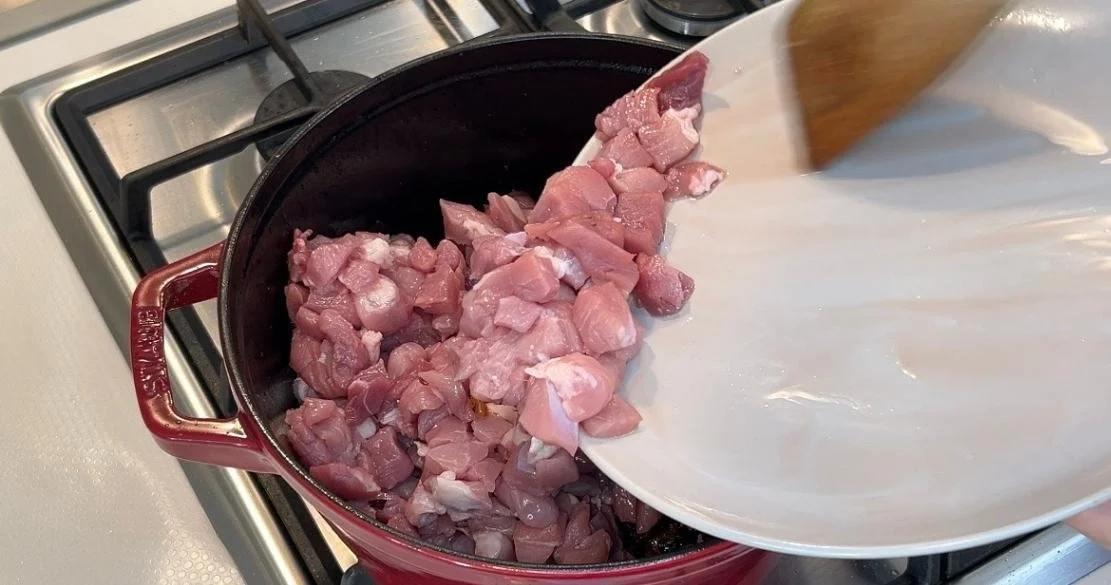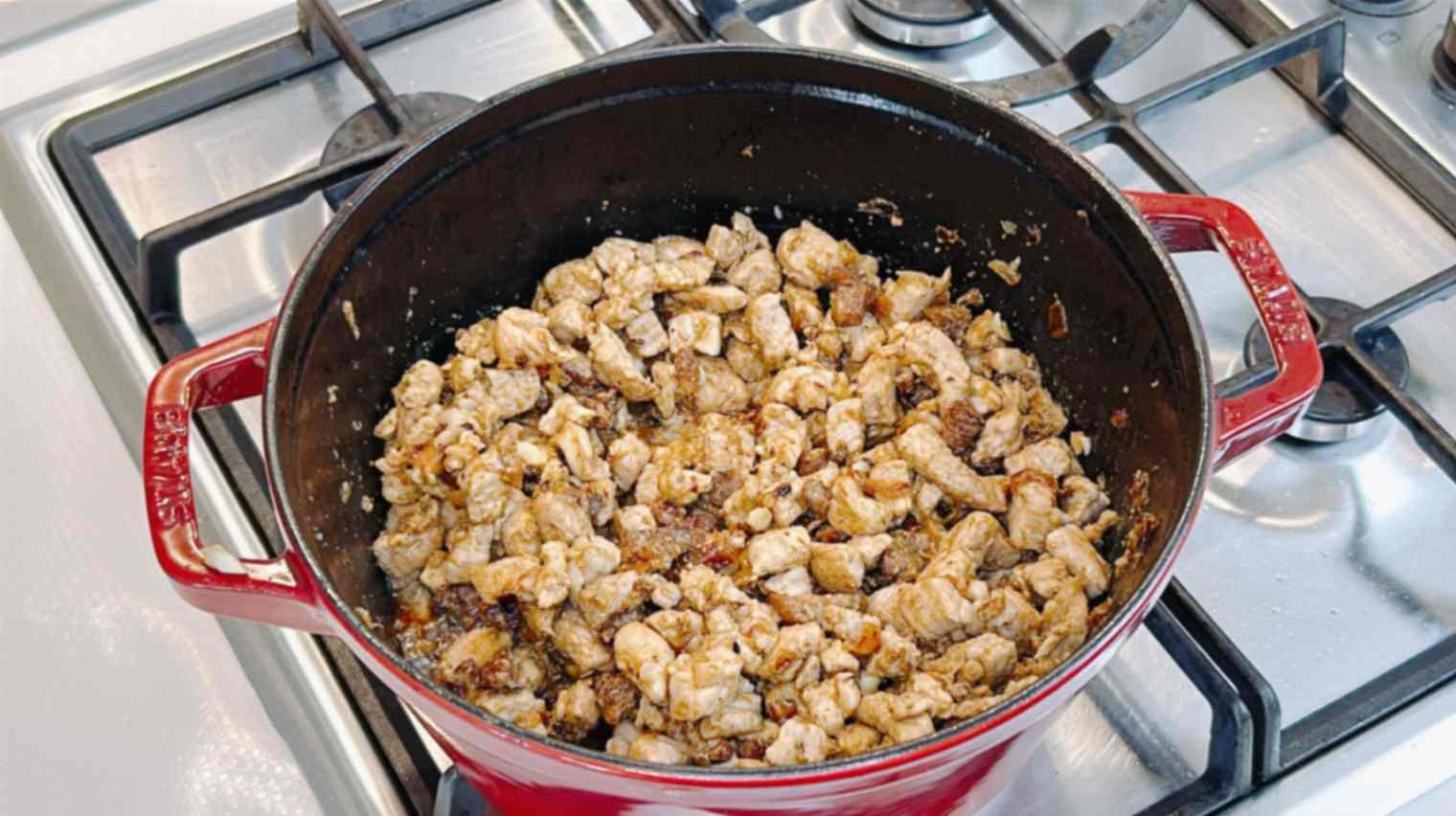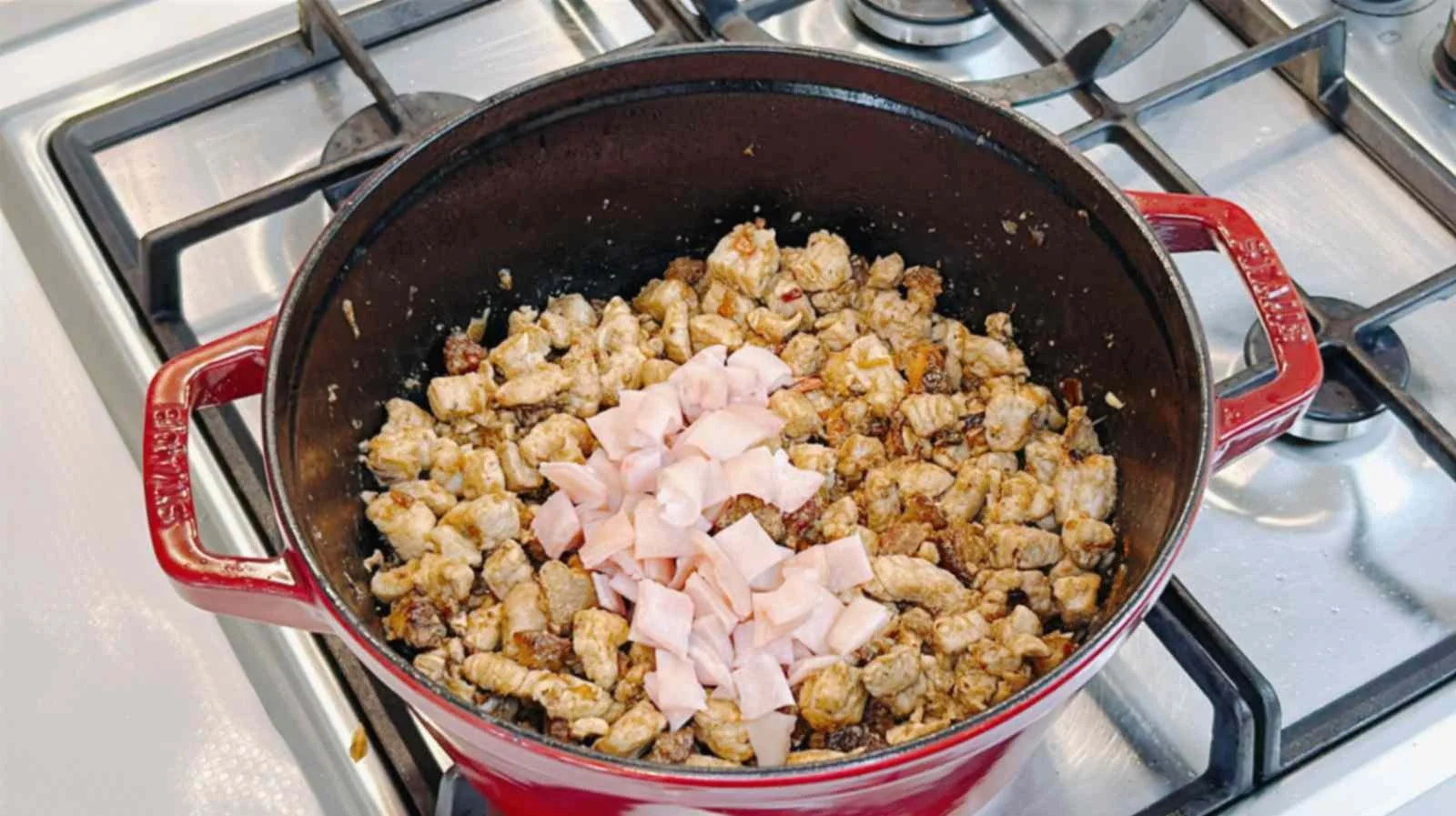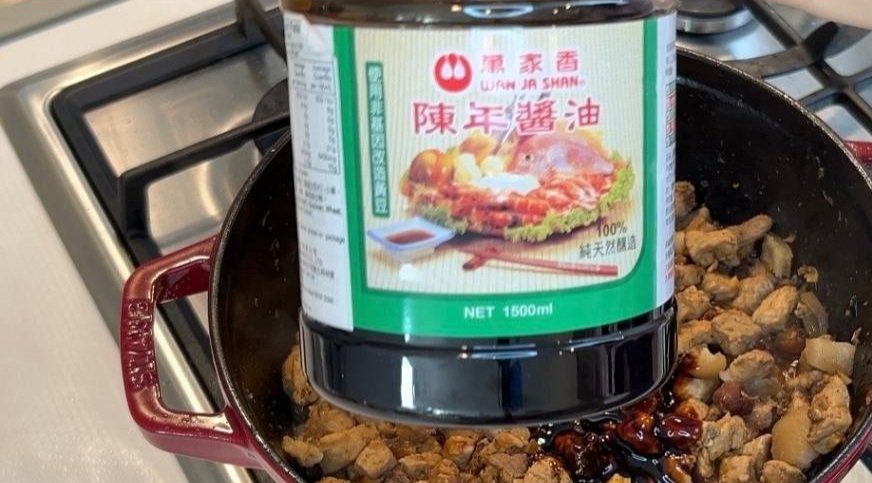Taiwanese Braise Pork & Eggs - Ultimate Comfort Topper
Pin Now and Cook Later!
Taiwanese Soul Food - So good! So Versatile!
Taiwanese Braise Pork & Eggs: A National Treasure!
When it comes to braise pork in Taiwan, there are three iconic styles, all of which pair beautifully with braise eggs. One uses pork belly cut into medium chunks, another uses minced pork, and the last involves cutting pork into small cubes. Today, I’ll share the recipe for the third style, where all the pork is diced into small cubes. If you had to crown one of these as the ultimate version, this would be it!
Since moving to Australia in 2017, I’ve often found myself missing the authentic taste of Taiwanese braise pork & eggs. Even though there are Taiwanese restaurants in Sydney, their versions don’t quite hit the sweet spot of my memories. The most authentic takeaway shop here makes a great version, but they stick to traditional pork belly, which can be a bit too greasy for my liking.
That’s why I created this recipe, blending pork belly with pork back leg for a healthier and more balanced version. Pork back leg is leaner, higher in protein, and has a satisfyingly bouncy texture. Combining it with the richness of pork belly gives you the best of both worlds—soft and bouncy textures in every bite.
In Taiwan, there are countless ways to prepare this dish, and I’ve tested many recipes over the years to find tips that truly enhance its flavour. This recipe will transport you straight to Taiwan without the need for a plane ticket! It’s become a regular main dish at my home parties, and my friends can’t get enough of it.
Compared to the other two styles of braise pork, this one is the most time-consuming, but also the most delicious and popular! The extra effort comes from cutting the pork into small cubes by hand (no machines here!). But don’t worry, I’ve streamlined the process to make it easier for you. Believe me, every minute you spend is worth it—once you try it, you won’t regret it!
So, follow my steps and let’s get started on this incredible journey of flavours!
Difficulty: Medium
Health features of this recipe: Good protein from eggs and pork back leg & less greasy than typical Taiwanese braise pork and egg rice
Time: 1 hour for cooking and 2 hours for brasing
Serve: 10 serves
Ingredients
Pork belly: 315g
Pork back leg/pork shoulder: 1kg (if the butcher sells it with skin, you need to get around 1.5kg)
Pork skin: 160g
Eggs: 12
Soy sauce: 100ml
Glaze soy sauce: 4 tbsp (60ml)
Cooking wine: 3 tbsp (45ml)
Shallot: 160g (fresh shallot) or 45g (pre-made deep-fried shallot)
Ginger: 15g
Garlic: 25g
Spring Onion: 25g (3-4 sticks)
Water: 800ml
Sugar: 2tsp
Ground black pepper: a bit of them
Tips for Selecting Ingredients
Pork Belly & Pork Back Leg: This recipe uses around 1kg of pork back leg/pork shoulder, but if you buy it from a butcher and it comes with the fat and skin layer, you’ll need about 1.5kg since we won’t use the fat and skin.
If you prefer a fattier flavour, you can swap the pork back leg for the same amount of pork belly. Traditionally, Taiwanese braise pork & eggs is made with pork belly only. However, I’ve made it less greasy and healthier by combining pork belly with pork back leg. Pork back leg has less fat, more protein, and a bouncier texture, so with this combo, you get a nice balance of soft and bouncy meat in each bite.
Pork Skin: Pork skin is essential for creating the gooey texture in authentic Taiwanese braise pork & eggs. If you can’t find it or don’t like it, you can skip it, but the dish will be a little less thick. In Australia, you can find pork skin at butcher shops. Just make sure to ask for pork skin without the fat layer since we only need the skin.
Soy Sauce: The type of soy sauce you use is important because it affects the flavour of the dish. Stick to regular soy sauce, as flavoured soy sauce or soya sauce for specific functions can change the taste. Different brands have unique flavours, and some are saltier than others. For soy egg fried rice, I recommend Kikoman, Wan Jia Shan, or Lee Kum Kee Premium Soy Sauce, which are popular in Asian supermarkets. If you’re in Australia, you can find soy sauce at Coles or Woolworths, but Asian supermarkets usually offer better prices and more options. If you’re not sure how to pick your first regular soy sauce, check out my previous post - Must-Have Condiments for the Asian Cuisine - for tips to help you choose!
Soy Sauce Glaze: If you don’t want to buy too many new condiments, you can replace soy sauce glaze with the same amount of regular soy sauce or dark soy sauce. It will still taste great! Soy sauce glaze is like a thicker, sweeter version of soy sauce with a stronger aroma, which adds richness and layers to this dish. You can find soy sauce glaze in Asian supermarkets, and like regular soy sauce, each brand tastes slightly different. I personally like the Wan Jia Shan brand because it’s less salty.
Cooking Wine: For choosing cooking wine, Taiwanese people traditionally use cooking rice wine. You can find them in the Asian supermarkets. Alternatively, you can use white grape wine because it works very well in many Taiwanese and Asian cuisines. You do not need expensive white grape wine. A cheap white grape wine in a Bottle shop or any liquor shop will work. That is one of the reasons I switched from a cooking rice wine to a cheap white grape wine because they are cheaper.
Shallot: Shallots are different from onions, so you can’t swap one for the other. They’re one of the key ingredients that give this Taiwanese braise pork & eggs its amazing aroma. In Australia, you can find fresh shallots at Coles, Woolworths, veggie shops, and Asian supermarkets. If you want to save time, you can use fried shallots instead. When using fresh shallots, you’ll need to fry them yourself, so buying pre-fried shallots can be a real time-saver. You can get fried shallots from Asian supermarkets—they last a long time and won’t go bad easily. Plus, they’re commonly used in many Taiwanese recipes, so they’re worth having in your pantry!
Egg: Here are 2 useful tips that you can apply in your daily life:
(a) Use an egg that is a few days old when making tea eggs. A very fresh egg can be hard to peel, and often the egg white will come off with the shell when you peel it. Of course, we still need to make sure our eggs are still in the good condition.
(b) Buy smaller eggs. The egg whites of smaller eggs have a better texture—they’re more chewy compared to larger eggs. In Australia and many other countries, the larger the egg, the more expensive it is. So, why not save money and enjoy better-tasting eggs? Hahaha!
Quick Steps Snapshot - Taiwanese Braise Pork & Belly
🔪 Sharpen your knives first! – You’ll be cutting a lot of pork and pork skin
1️⃣ Prepare ingredients – Slice ginger, cut shallots, mince garlic, and dice pork belly, pork leg, and pork skin into small cubes. After cutting the pork belly, you can do step 3 while you cut the rest of the pork leg and pork skin.
2️⃣ Boil/steam the eggs – Steam or boil for 10 minutes, then transfer to cold water and peel.
3️⃣ Render pork belly fat – Pan-fry pork belly over medium heat until golden brown and the fat is released.
4️⃣ Sauté aromatics – Add sliced ginger and shallots, sauté until shallots turn brown and crispy.
5️⃣ Add garlic & pork leg – Sauté until the pork leg turns white on all sides.
6️⃣ Add sugar & pork skin – Stir until the pork skin becomes transparent.
7️⃣ Season – Add cooking wine, soy sauce, soy sauce glaze, and black pepper. Stir for 2-3 minutes until aromatic.
8️⃣ Braise – Add water, spring onions, and boiled eggs. Bring to a boil, then braise on low heat for 1.5–2 hours. Stir occasionally.
9️⃣ Skim excess oil (optional) – Remove some oil from the surface for a lighter dish.
🔟 Serve & enjoy! – Pair with rice, noodles, or leafy greens. Letting it sit overnight enhances the flavour! 😋
💡 Pro Tip: Prepare this dish a day ahead of serving. Letting it sit in the fridge overnight allows the flavours to deepen and develop a richer, more satisfying taste. It’s worth the wait!
Detailed Step by Step Guidance - Taiwanese Braise Pork & Belly
Get our gears ready!
Sharpen 2 knives: Before you start, I highly recommend sharpening two knives because you’ll be cutting a lot of pork and pork skin today. Trust me, sharpened knives will save you time and effort, doubling your cutting efficiency. If you only have one knife, sharpen it again after cutting the pork belly and pork back leg before moving on to the pork skin—or vice versa.
Want to know how to sharpen your knife at home? Leave a comment, and I’ll make a video on it in the future! 🤗
Pot Reminder: Use a large pot to prevent the liquid from overflowing while stewing later. I prefer using a Staub cast iron pot because it retains heat well, keeps the liquid inside, and makes stewing or braising more efficient. But don’t worry—any pot you have at home will work just fine!
1. Prepare the Ingredients
Pork Belly, Pork Back Leg, and Pork Skin (an important key to delicious Taiwanese braise pork and eggs): Cut into small cubes, approximately 0.5–1 cm on each side. After cutting the pork belly, you can do step 3 while you cut the rest of the pork leg and pork skin.
Ginger: Slice into thin pieces about 0.2 cm thick.
Shallots: Cut into small pieces (skip this step if you’re using fried shallots).
Garlic: Mince it finely.
Spring Onion: Cut into strips about 5–6 cm long.
2. Steam or boil the eggs for 10 minutes. Once cooked, transfer them to cold water and peel them.
Tip: Be gentle while washing and placing the eggs into the pot to avoid cracking them. If the shells crack, the egg whites may leak out during steaming or boiling.
Check out my previous recipe Aromatic Tea Eggs Recipe: Secret Twist with Coke for more tips about how to perfectly steam or boil eggs.
3. Add the pork belly to the pot and pan-fry it over medium heat. Stir occasionally until the pork belly releases its oil, shrinks, and turns golden brown on all sides.
No need for extra oil: Pork belly contains plenty of natural fat. As it heats up, the fat will start to render out within a few minutes. If you’re using a stainless steel pot, consider adding 5ml of oil to prevent sticking. However, if you are using stainless steel pot, then it would be good to add 5ml of oil. Check out my previous post - Say Goodbye to Sticky Stainless Steel Pan, for detailed step-by-step guidance on how to make your stainless steel pan/pot non-stick (NOT adding more oil).
For the first few minutes, don’t move the pork belly. Let it release some oil before stirring to prevent it from sticking to the pan.
Why this step matters: This step is important for 3 reasons. Frist, the rendered fat will be used to sauté the other ingredients in the following steps. second, browning the pork belly creates fond (those tasty brown bits) through the Maillard Reaction, which adds depth to the flavour. Third, this step reduces the greasiness of the pork belly by releasing excess oil.
Be patient & Time-Saving Tip: This step can take 10-20 minutes. I highly recommend you start to saute the pork belly as soon as you’ve finished cutting it. While it cooks, you can prepare the remaining ingredients. Just remember to stir occasionally!
Safety Tip: Be cautious as the oil might splatter during cooking. Stir carefully to avoid burns.
4. Add sliced gingers and fresh shallots and saute it until fresh shallots turn brown and crisp. Alternatively, you can use deep fried shallots to reduce the time.
Key Tip: It is important to saute until all fresh shallots turn brown and crisp, which means they become the fried shallot. Achieving crispy shallots is crucial for bringing out the full flavour. Don’t rush this step, as the rich aroma will add depth to your Taiwanese braise pork & eggs.
If you use pre-fried shallots, the time for this step becomes shorter. Just sauté until you start to smell the fragrant aroma from the ginger and shallots.
5. Add the minced garlic and pork leg to the pot and sauté until the pork turns white on all sides.
At this point, you’ll begin to smell the aromatic mix of garlic, ginger, fried shallots, and pork.
This step won’t take long, but be patient to ensure that all sides of the pork leg turn white. It’s normal for some water to be released from the pork leg during this process.
6. Add sugar and pork skin to the pot and saute until it becomes transparent.
As mentioned in the ‘tip for selecting ingredients,’ I highly recommend adding pork skin because it contributes to the gooey texture of Taiwanese braised pork & eggs. If you’re unable to find it or simply don’t like it, you can skip it, but the braised pork & eggs will be a bit more watery without it.
7. Add cooking wine, soy sauce, soy sauce glaze, and ground black pepper to the pot. Stir everything together and cook until you smell the aromatic blend of the condiments and pork.
This step will take around 2-3 minutes.
8. Add water, spring onion and boiled eggs to the pot. Bring it to a boil over high heat, then braise it for 2 hours over a small flame. Stir it from time to time over 2 hours to avoid burning at the bottom.
Braise for at least 2 hours to allow the flavours to fully soak into the eggs and pork. This will also make the egg whites more bouncy. If you’re short on time, braise for at least 1.5 hours.
As every stove can be different, make sure to stir occasionally and add a bit of water if the liquid level drops below the ingredients to keep everything covered.
9. Skim the Oil and Enhance the Flavour (Optional):
Use a spoon to skim some of the oil floating on the surface of the Taiwanese braise pork & eggs. Keep a small amount of oil in the dish to maintain its delicious richness while ensuring it’s not overly greasy.
💡 Pro Tip: Prepare this dish a day ahead of serving. Letting it sit in the fridge overnight allows the flavours to deepen and develop a richer, more satisfying taste. It’s worth the wait!
10. Ready to serve! This braise pork service in lot of different ways:
With rice or sticky rice
With glass noodles or normal thin noodles
With boiled or steamed leafy vegetables
In Taiwan, we often pair this dish with sweet and sour cucumbers (pickled cucumbers) as they complement the richness of the braised pork and eggs perfectly. When my friends come over to enjoy this Taiwanese braised pork & eggs, they always ask for the sweet and sour cucumbers as well, making it a regular addition to the meal now. 🤤 Check out my previous recipe for sweet and sour cucumbers to add that perfect side dish to your meal!
Taiwanese Braise Pork and Eggs - Ultimate Comfort Topper
Although this Taiwanese braised pork & eggs with rice takes a bit of time to prepare, the effort is well worth it! I love making it over the weekend because it’s so convenient for meal prep throughout the week. Not only does it last for several meals, but it also offers a variety of ways to enjoy it, keeping things interesting without any fatigue.
I hope you enjoy this Taiwanese National Food - Braise Pork & Egg. Leave a comment below about your experience of making it. I would love to hear from you 😉








